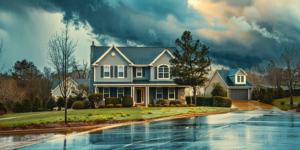Lawns are a staple piece in a homeowners landscape. They are one of the first areas that people see when looking at your home. An attractive and sustainable lawn is not only visually appealing, but it is also beneficial to the environment. Quality lawns add value to your property and set positive standards for your community.
In 2016, the National Association of Landscape Professionals conducted a customer survey that tested Americans’ knowledge of lawns and their required care. Among over 2,000 US adults, “64 percent of Americans falsely believe all grass needs to be fertilized in the spring, 57 percent of Americans mistakenly believe if a lawn is not green, it is not healthy, nearly one in three Americans (32 percent) admit they aren’t sure how often a lawn should be watered, and 31 percent of Americans who have a lawn/landscape say they don’t know how to grow a healthy/lush lawn,” said the National Association of Landscape Professionals.
The majority of the Americans surveyed lacked basic knowledge of how to properly care for their lawn. Being that lawns contribute to homeowner and community pride, listed below are six tips for reviving your dying lawn.
Dethatch Your Lawn
Dying lawns have built up of dead grass and lawn clippings matted to the ground. The build up prevents nutrients and moisture from reaching the soil. When the soil is not able to receive the nutrients and moisture it requires, fungal growth is a common outcome. Dethatching is the process in which you use a rake to remove the build up so the soil can be exposed to proper airflow, water, and fertilizer. After you undergo the dethatching method, your lawn will be able to effectively drain itself when necessary.
Test Your Lawn
Test your dying lawn and soil’s pH levels. The pH levels can reveal as to why your lawn is not green and flourishing. You need sufficient, quality soil to grow a great lawn. The test can be sent in a sample form to a professional for review. There are also cheap tests kits where you can conduct your own test yourself. Non-acidic and non-alkaline conditions are the state in which grass thrives the most. If there are high acidic and alkaline levels detected, you will have to clean up your lawn and provide the proper treatment in leveling out such pH levels.
Clean Up Your Lawn
Examine your lawn after a long winter and determine what state your lawn is in. Closely depict your lawn with equipment, such as a rake and pruning tool, and remove any compacted leaves, twigs, or dying plants. Lawn neglection is easy to see and should be revamped as soon as possible. Damage is going to consistently and progressively worsen the longer that your lawn remains unkempt. A clean lawn is a happy lawn and a happy lawn is a happy homeowner and environment.
Aerate Your Lawn
Compacted patches of grass and soil can form within your lawn when it is left unattended to. A way in which you can reduce compaction is by using the aerating method. Aerating perforates the soil with small holes that, in result, give the roots room to penetrate the soil freely and easily. Water and nutrients are able to access the roots and soil more thoroughly when your lawn is aerated. Two aerating equipment tools that you can use on your lawn are the plug aerator and the spike aerator. The spike aerator pokes holes into your lawn and soil to allow breathability and the plug aerator removes compacted patches of grass from the soil.
Weed Treat And Seed Your Lawn
Making sure that your lawn is weed-free is an essential process. Weeds are not only ugly, but they cut off your lawn’s nutrients supply. You should remove all the weeds from your lawn and then apply a preventative weed treatment that will stop future growth. Post-emergent herbicides can be used as a treatment to kill weeds that are already sprouted throughout your lawn. For those not wanting to apply chemicals onto your lawn, you can use natural alternatives, like cornmeal gluten, as a weed treatment.
If your lawn is patchy and has bare spots, you need to plant grass seeds in those areas. The seeds are going to require a lot of attention and steady nutrients so they can grow to their full potential. Re-seeding may have to be repeated throughout the seasons.
Equipment Maintenance
Perform the basic maintenance that your lawn requires. This includes lawn mowing to keep grass healthy, using a string trimmer to cut grass and weeds that your lawn mower can’t reach, and rake to spread soil and gather dead leaves/lawn clippings for removal. Sheers can be used to make extra trimmings to your lawn and or nearby bushes and a hose and or sprinkler can be used to hydrate your lawn.




